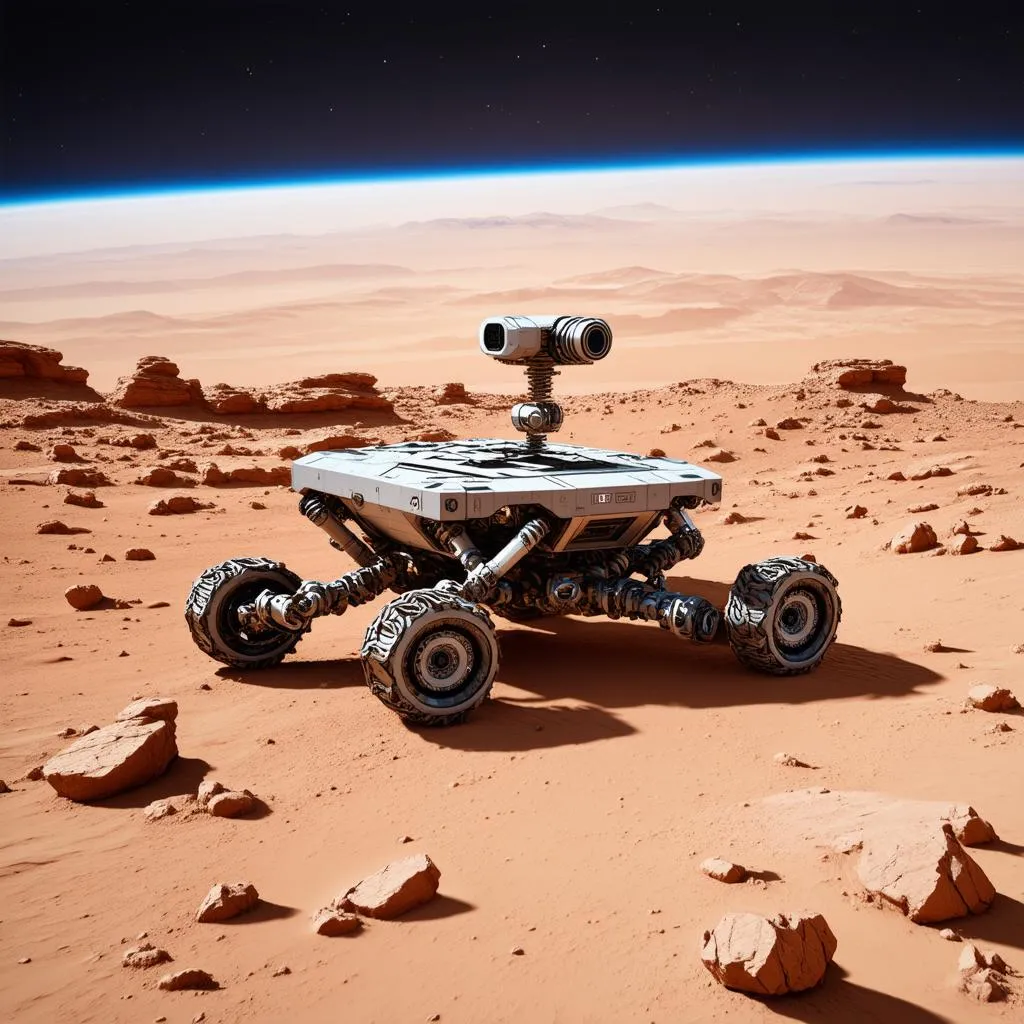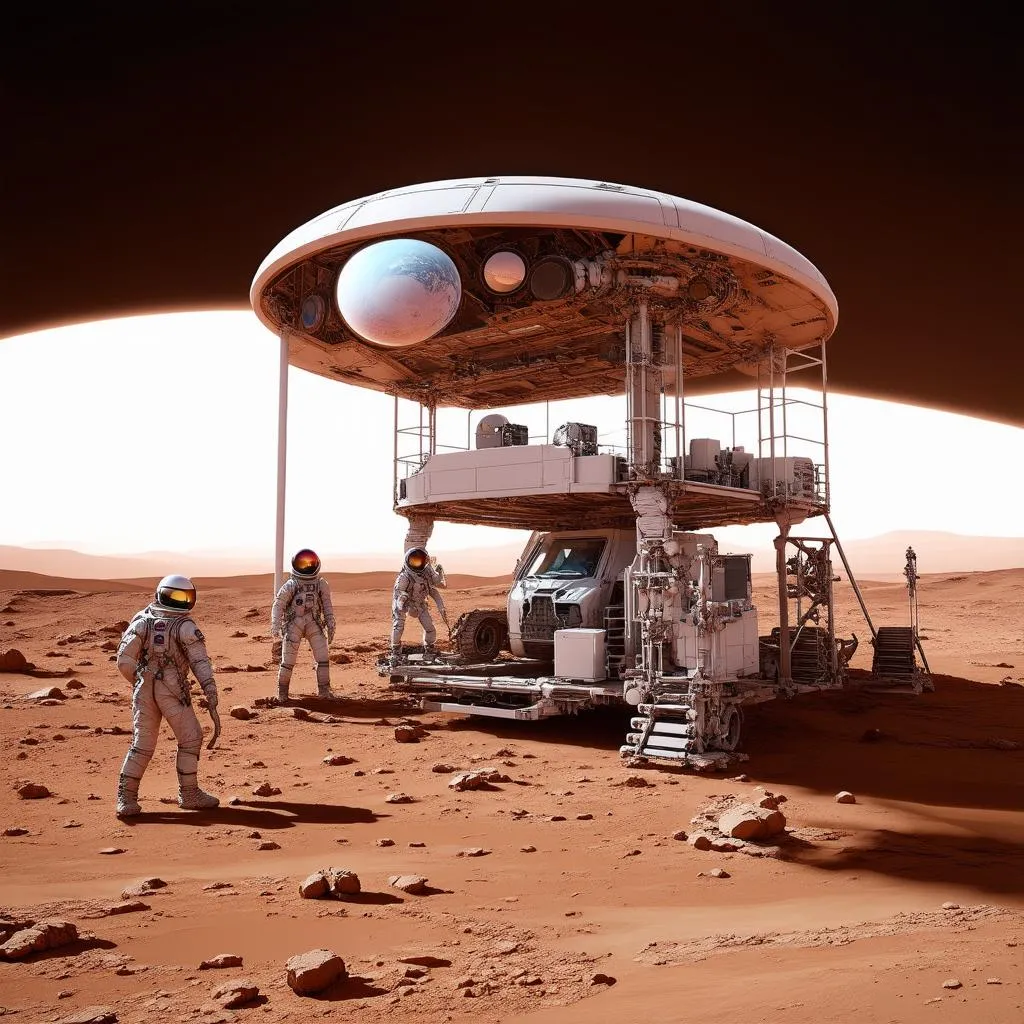Have you ever gazed up at the night sky, mesmerized by the twinkling stars and wondered, “How long would it take to travel to Mars?” Since childhood, many of us have dreamt of becoming astronauts, venturing into the vast unknown of space. Mars, the red planet, has captivated our imaginations for centuries as a potential second home for humanity. But just how long would it take to get there?
Decoding the Journey to Mars
The journey to Mars is not as simple as hopping on a plane. It’s a complex ballet of celestial mechanics and careful planning. Unlike driving down a highway where the distance remains constant, the distance between Earth and Mars changes constantly as they orbit the sun.
- Closest Approach: At their closest, Earth and Mars are about 34 million miles apart. This proximity occurs roughly every two years.
- Furthest Distance: However, at their furthest, they can be a whopping 250 million miles apart!
This fluctuating distance significantly impacts the duration of a Mars mission.
Factors Influencing Travel Time
The journey’s length isn’t just about distance. Several factors influence the travel time to Mars:
- Rocket Technology: The type of propulsion system used dramatically affects travel time. Advanced ion propulsion systems, currently under development, could significantly shorten the journey compared to traditional chemical rockets.
- Trajectory: The chosen flight path plays a crucial role. A direct path might seem faster, but it requires more fuel. Missions often use a more fuel-efficient trajectory called a Hohmann transfer orbit, which takes longer but conserves resources.
- Planetary Alignment: Earth and Mars need to be in the correct positions for a launch and landing. This optimal alignment happens only every 26 months, creating launch windows that mission planners must adhere to.
So, How Long Does it Actually Take?
Based on current technology and considering the factors mentioned above, a one-way trip to Mars is estimated to take around 7-9 months. However, a complete mission, including a stay on Mars and a return journey, would likely take 21-30 months.
Preparing for a Martian Adventure
A journey to Mars requires meticulous planning and preparation. Here’s a glimpse into the essential aspects:
Training and Physical Conditioning:
Astronauts undergo rigorous training to prepare for the physical and mental demands of space travel. This includes:
- Centrifuge Training: Simulates the intense G-forces experienced during launch and landing.
- Zero-Gravity Simulation: Prepares astronauts for working in a weightless environment.
- Isolation Studies: Helps astronauts adapt to the psychological challenges of prolonged confinement.
Spacecraft Design and Life Support Systems:
A Mars spacecraft needs to be self-sufficient, providing:
- Life Support: Systems to generate oxygen, recycle water, and manage waste.
- Radiation Shielding: Protection from harmful solar and cosmic radiation.
- Communication Systems: Reliable communication with Earth, even across vast distances.
 Mars Rover Exploration
Mars Rover Exploration
FAQs: Unraveling the Mysteries of Mars Travel
How much would a trip to Mars cost?
The estimated cost of a manned mission to Mars is astronomical, ranging from hundreds of billions to trillions of dollars. However, advancements in technology and increased private sector involvement are expected to drive down costs in the future.
What are the biggest challenges of a Mars mission?
The challenges are numerous, including:
- Human Health: Protecting astronauts from the harsh Martian environment, including radiation, low gravity, and psychological effects of isolation.
- Technical Complexity: Developing reliable and robust spacecraft systems for such a long and demanding journey.
- Resource Management: Ensuring sufficient food, water, and other resources for the entire mission duration.
What are the potential benefits of going to Mars?
Despite the challenges, a Mars mission offers exciting possibilities:
- Scientific Discovery: Unraveling the mysteries of Mars’ past and searching for signs of past or present life.
- Technological Advancement: Driving innovation in fields such as propulsion systems, life support, and materials science.
- Human Inspiration: Inspiring future generations and expanding our understanding of our place in the universe.
Travelcar.edu.vn: Your Guide to Exploration
Intrigued by space travel and the wonders of the universe? Explore further with Travelcar.edu.vn! We offer a wealth of resources on topics ranging from the latest space discoveries to insightful articles on the future of space tourism.
Don’t forget to check out our related articles:
 Mars Base Habitat
Mars Base Habitat
Embracing the Future of Space Exploration
The journey to Mars is a testament to human ingenuity and our insatiable thirst for exploration. While it presents significant challenges, the potential rewards are immense. As we continue to push the boundaries of technology and knowledge, the dream of reaching Mars is becoming increasingly tangible. Perhaps one day, a trip to the red planet will be as commonplace as a vacation to a distant island. Until then, let us continue to dream, explore, and inspire future generations to reach for the stars.